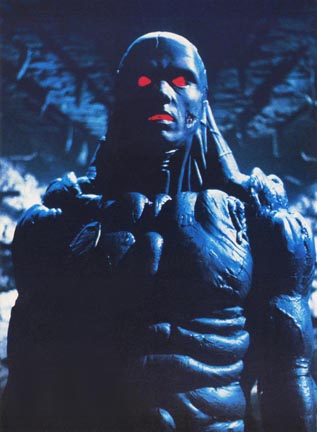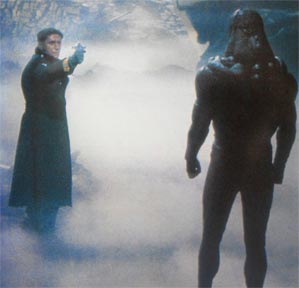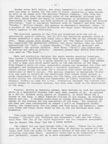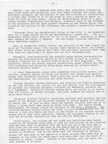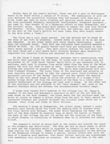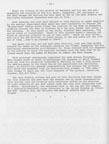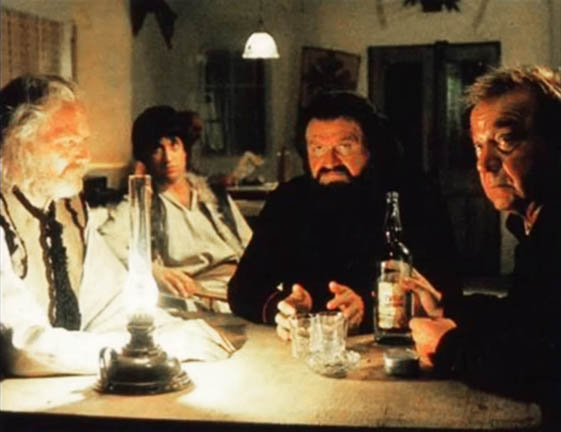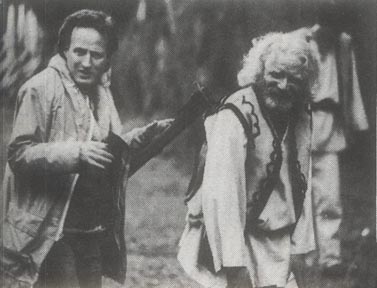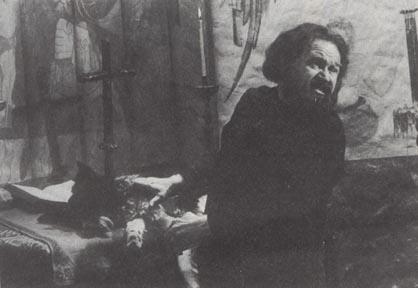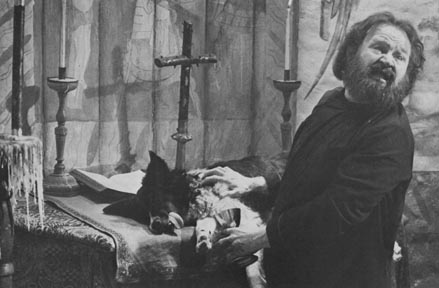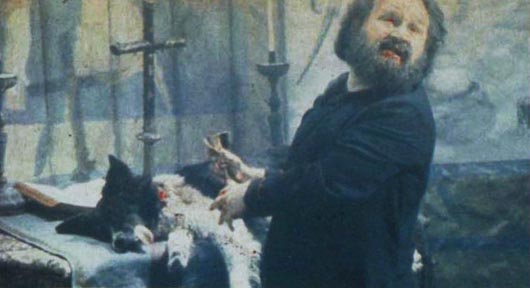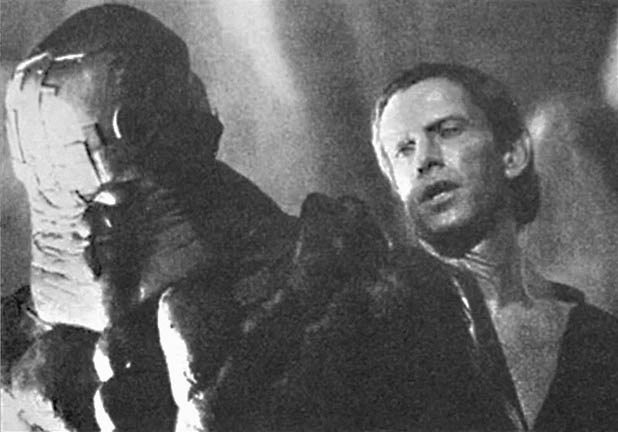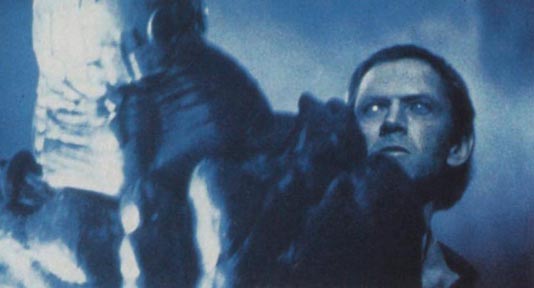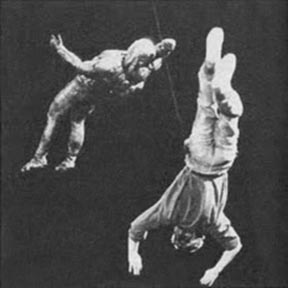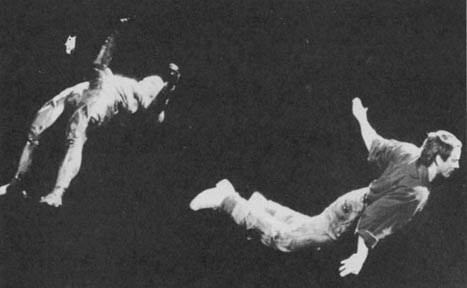The Keep film by Michael Mann
Written by Kit Rae (and friends) in 2005. Last update February 2020
PAGE 3 - BACK TO PAGE 2
Artist Enki Bilal was brought in to redesign the look of the stage 2 and stage 3 Molasar. A new stage 2 costume was built by Nick Allder and Nick Maley showing exposed muscles and a red glow coming through Molasar's eyes and mouth. A new stage 3 costume was also built. Long after principal photgraphy had ended, all of the Molasar scenes were re-filmed with actor Michael Carter (Bib Fortuna from Return of the Jedi) wearing these new costumes.
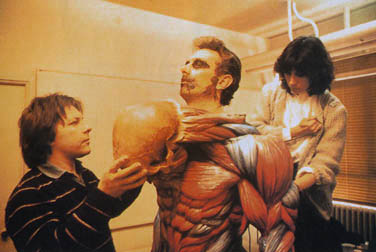
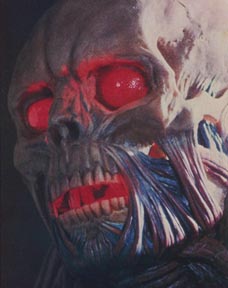
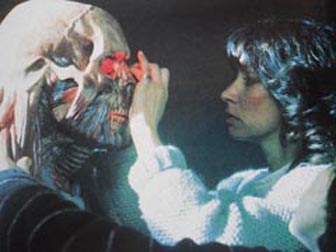
Assembling Nick Allder and Nick Maley's revised stage 2 Molasar suit. Molasar was played by actor Michael Carter
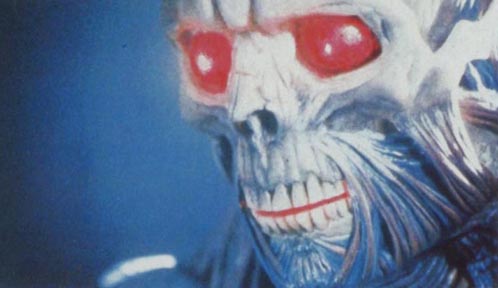
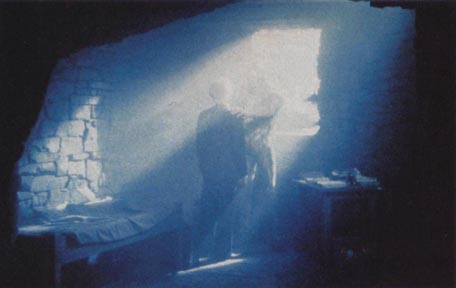
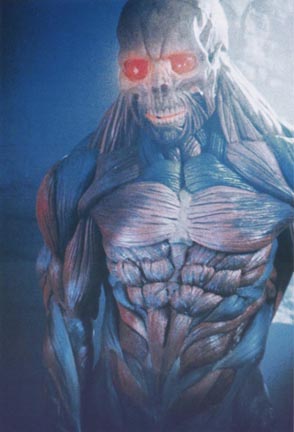
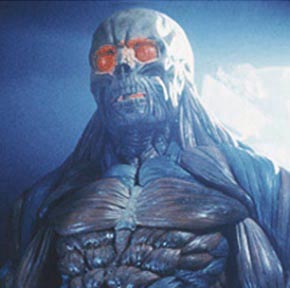
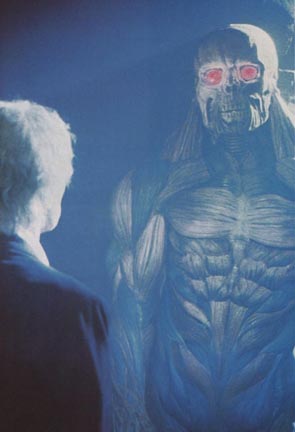
The final stage 2 Molasar costume used in the film. These PR photos were color graded with deep blues, although the actual movie was more neutral in color
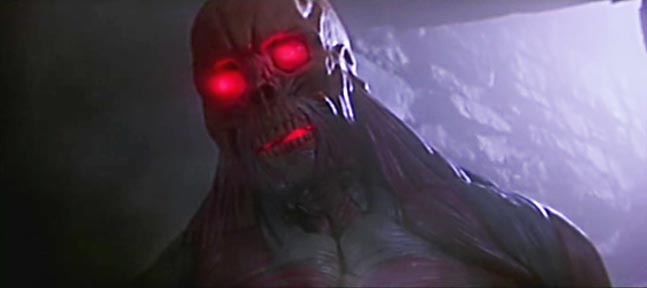
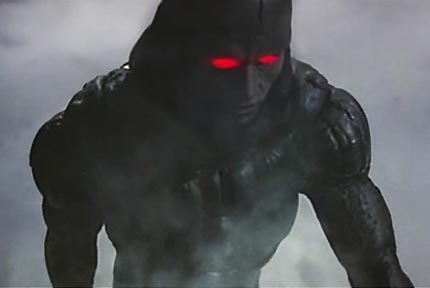
The final stage 2 and stage 3 Molasar costumes, worn in the fim by Mike Carter
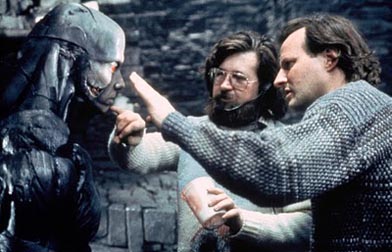
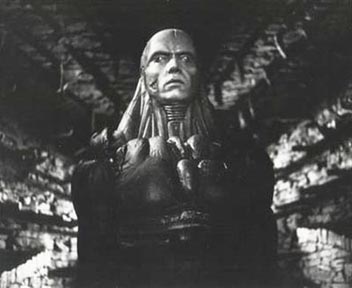
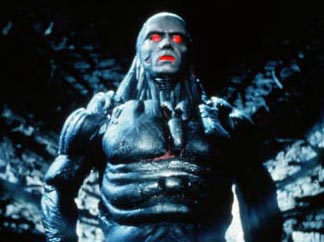
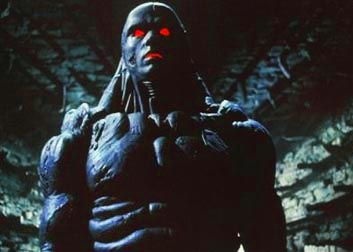
The stage 3 Molasar as seen in the final film was re-designed by artist Enki Bilal, familiar to readers of Heavy Metal and Métal Hurlant magazines in the late 1970's and '80's. The facial features were sculpted to resemble actor Scott Glenn.
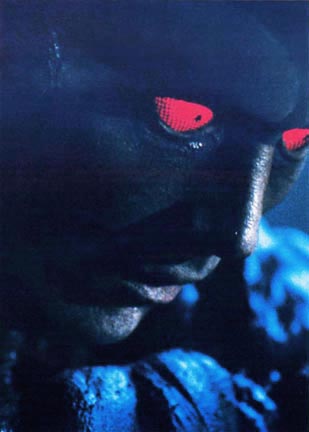
The final stage 3 Molasar costume used in the film. These PR photos were color graded with deep blues, although the actual movie was more neutral in color
FINAL CUT RUNNING TIME - Rumors have spread throughout the years that Mann's final cut was around three hours in length (I have read reports of at least four different running times), but I think all those rumors came from a comment by Alex Thompson. He stated in an interview that the film was running 3 1/2 hours long, but he was referring to the assembly cut. He left the production long before the film was at the "final cut" stage. Assembly cuts are always much longer than the final cuts since directors and editors tend to start by throwing just about everything shot into the first assembly, then trim out what is not needed, or what does not work to tell the story, until they arrive at a rough cut closer to the running time needed, then do more trims to arrive at a final cut. Big budget studio films from this period were typically around two hours long, and The Keep was no different. However, it seems clear that the final film released was a shortened version of Michael Mann’s intended final cut.
The only other mention of a running time for The Keep I have ever read was from article in the French magazine Starfix from 1984 that included in depth interviews with the cast and crew. It stated The Keep was always to have a minimum two hour running time, but the nervous producers decided the final cut Mann delivered needed to be shortened by at least a half hour. Mann's original uplifting ending was one of the major cuts to the film. He refers to that ending in interviews made prior to the film's release, it was described in the film's press kit, and photos from that ending were shown in press release photos and magazines distributed prior to the film's release. According to a French Michael Mann interview in 1996, in one of the few times he has actually spoken of The Keep since 1983, Mann stated that the film released in theaters was butchered:
"I wanted to make a film about the psychological origins of fascism, its nature, and the appeal it can have to many people. In that sense, it was to be very close to a fairy tale. I stress the fairy tale because, unlike fables, fairy tales appeal to the unconscious. I have always thought that if you have a big interest in fables, you are a behaviorist; but if you are attracted to fairy tales, you are definitely Freudian. The Keep was meant to be an adaptation of the book by Bettelheim, a psychoanalyst of fairy tales. I speak in the past tense because my film was butchered and my initial idea was largely distorted." - Director Michael Mann in 1996, translated from a February 1996 Michael Mann interview from Les In Rocks
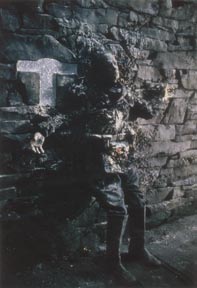
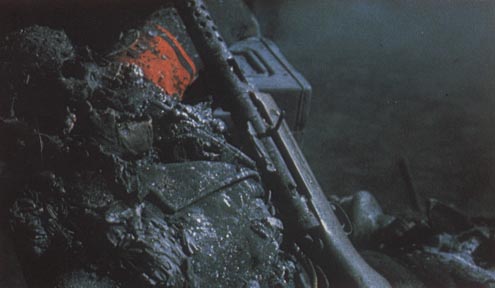
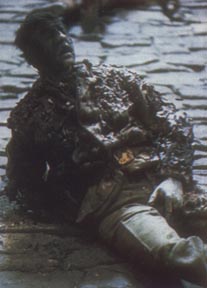

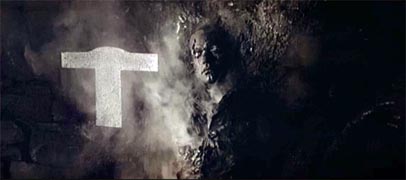
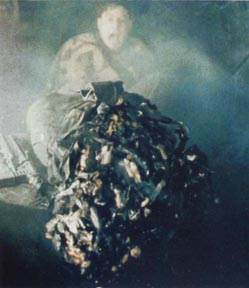
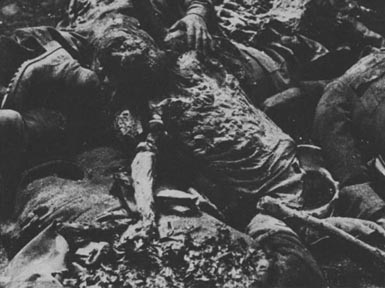
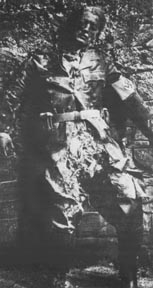
Burnt corpse props from the set of The Keep, created under the supervision of special makeup effect artist Nick Maley, filmed in the soundstage at Shepperton Studio Centre in the United Kingdom. With the exeption of a few brief closeups, these were barely seen in the film.
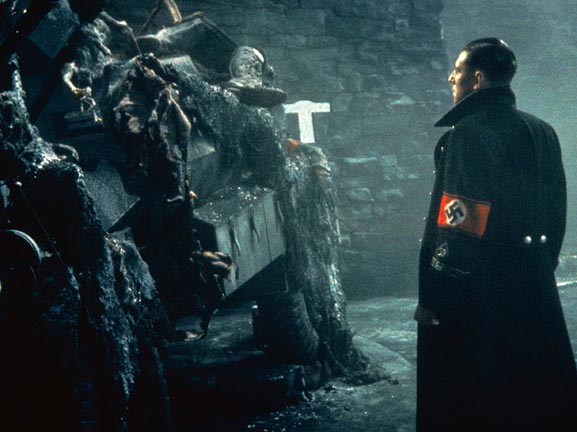
Actor Gabriel Byrne on the set of The Keep at Shepperton Studios
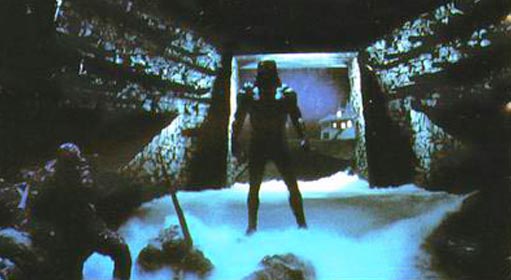
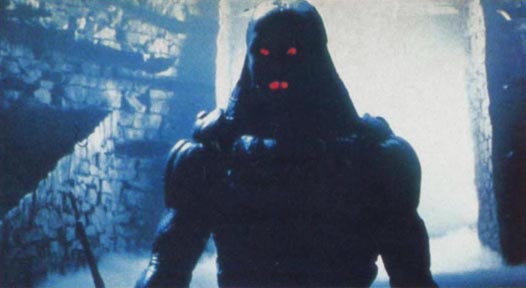
Actor Michael Carter (in costume) as Molasar at the entrace to the keep
WHO MADE THE DISTORTED FINAL CUT? - After the film was completed and test screened, the reaction was not positive. Rather than spend more money to complete the weak finale of an already bloated and over budget film, the nervous producers ordered that the film, which was running around two hours long, be shortened by approximately 30 minutes. There have been rumors repeated over the years that Paramount, not Michael Mann, made the haphazard last minute cuts prior to release. I have also seen it repeated over and over that Paramount fired Mann and took over finishing the film. None of that is correct, and Mann has never said he was fired. Mann did not have final cut rights, but he made the cuts ordered. According to members of the production, the 96 minute film released was indeed his cut, but it was nothing like the version he had originally intended to make, nor was he happy about being forced to make the cuts. The result was a truncated film that was missing not only much needed explanatory scenes, but a lot of the overall beauty and substance of Mann's adult fairy tale were lost to the cutting room floor.
The final film seems to be missing large portions of character development and story in the second half. For example, many people were baffled by the fact that within minutes of Glaeken meeting Eva (in film time), he is having sex with her, which is seemingly an indication that some vital character development scenes were cut. However, most people seem to completely miss the fact that he hypnotizes her the first moment she looks into his eyes. That is one of the powers from the vampire myth. He also coldly sends her to sleep with a simple touch when she tries to get answers from him after they have sex. Whether or not this was simply how Glaeken regularly used mortal women (for sex), or if he simply intended to create a sexual bond to enforce his seductive will power over her, it made sense the first time I saw the film. Glaeken's ultimate goal was to stop Molasar's escape, and one of his goals was to make Eva convince her father that Molasar was evil, to prevent him from removing the talisman which kept Molasar imprisoned. She ultimately did exactly that.
It does seem like Glaeken and Eva's story is mostly missing however, and there are additional scenes in the script that are not in the film. Eva did fall in love with Glaeken and he explained who he was and his mission to destroy Molasar to her. This development is in the script but not present in the film, other than one line of dialogue Eva says to her father that hints at it. Those scenes were a victim of the approximately 30 minutes of cut scenes. Snippets of extra scenes between those two characters, not seen in the final film, also appear in the film trailers.
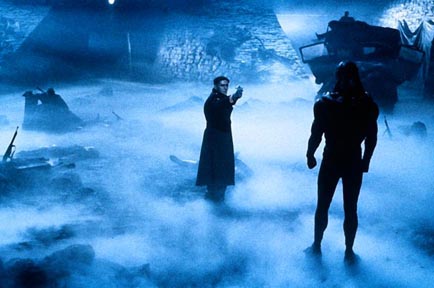
Actor Gabriel Byrne on the set of The Keep at Shepperton Studios with Michael Carter (in costume) as Molasar. The blue tint was added into some of the PR photos, but the released film had more of a neutral color
The second half of the film can make little sense to the unimaginative casual viewer without reading between the lines of what is presented in the film, or having read the novel it was loosely based on. The latter half of the film suffers (to some) from huge chunks of missing story material, and there are places where dialogue appears to be cut off, and music cues that shift jarringly to other cues mid scene, making it seem these edits were rushed. Production artist Enki Bilal was on set for some of the scenes shot for the third act, and has stated the cuts ruined the film. He was disappointed that certain scenes were removed, including Scott Glenn falling into Molasar's cavern, exploding heads, and a scene of Eva going into Molasar's cavern, all taken from the last thirty minutes.
Author F. Paul Wilson read Mann's original screenplay based on his book and has stated the released film follows Mann's screen story faithfully. While he dislikes the film and considers it a lousy adaptation of his novel (although he really likes Tangerine Dream's music), his criticisms are the same as others - the last half hour of the film seems truncated.
"I think it was a difficult book; I had three protagonists, two villains, and an innocent caught in the middle. I think there were a lot of difficult relationships and he needed to spend more time there. I think he needed another 25 minutes; things just happened too fast in the last half-hour. It was bam - bam - bam. Over. There were so many missed opportunities" - Author F. Paul Wilson from Fangoria #36 1984
The imagination created in the viewer's mind by the dream logic of what is presented in the film either fills in the story blanks successfully and works for those who love the film, or it does not and the viewer rejects it. Even with its flaws, few in my opinion, the good versus evil, nightmare fable story, and barely-hinted-at mythology are told in a unique dream-like way. A 'consensual dream' as Michael Mann has put it, that appealed to those who prefer their films to remain somewhat mysterious. Some people do not not like every blank to be filled in, leaving more to the imagination, and a film like this need not provide all the answers to work on that level - just the clues.
"In most horror films there are attempts at explanation of where non-natural events came from. You attempt to explain cause using some bad pseudo scientific way, even the Frankensteins...and in dreams those things aren't explained. They are just there, with amazing power. And part of the power is because causes aren't explained so there are some unnatural events and unnatural entities in The Keep and specifically what they are and specifically where they came from aren't explained because they are states of mind." - Director Michael Mann from The Electric Theatre Show interview filmed during the making of The Keep in 1983.
Something about the film definitely worked for me, and it chillingly stuck in my brain long after the film ended. The music. The settings and visuals. The two opposing sides of the German army. The foreboding way Eva looked back at the keep in the freeze frame ending, but was actually looking into the camera at the audience. Sure, I was wondering about what happened to the otherworldly beings Glaeken and Molasar at the end, but it was also as if the film had presented to me a fairy tale of fascism and the shifting good and evil sides of mankind in its self contained world, with Eva as the moral middle ground, then had her point the finger back at the audience with that stare.
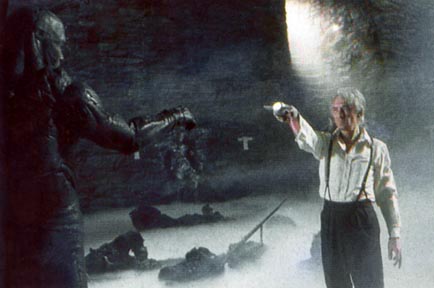
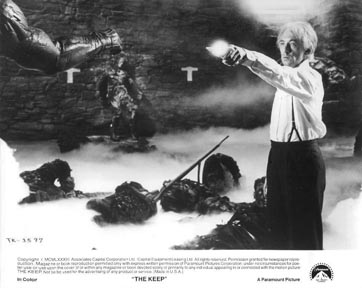
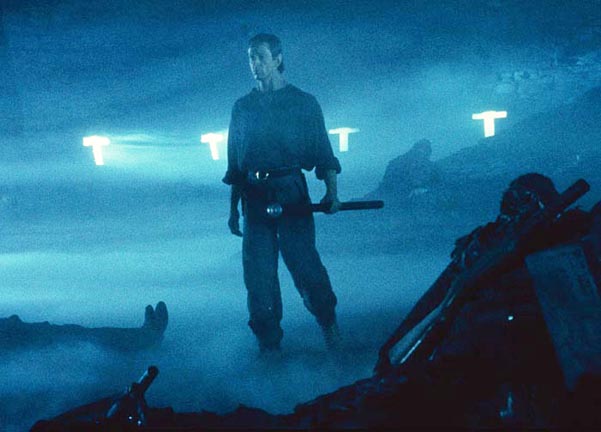
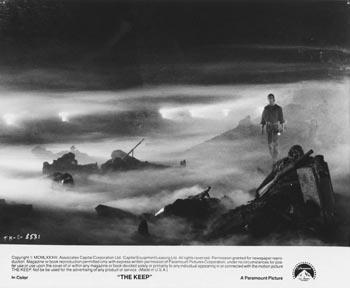
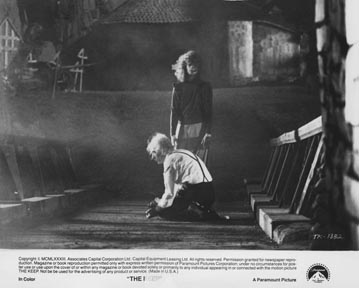
The Keep press release photos showing the climax of the film
DELETED SCENES - I have a copy of the official Handbook of Production Information and the 1983 press kit (press kits were packages sent to the media that included film photos and information about the film and film makers) which includes a production notes section. It, and the first draft screenplay, give clues to several scenes that were filmed but not included in the final release. There are also many interviews with cast members talking about missing scenes filmed, photos of several missing scenes, as well as storyboards and script pages of scenes that have been in circulation since the film was released that were not in the final cut. There was also a Mayfair Games boardgame based on The Keep released in 1984 with a storyline taken from the movie script that gives clues to several missing scenes.
Production diary from The Keep Handbook of Production Information (click pages to enlarge)
• There was a scene filmed in the inn set of Father Mihail, the caretaker, and the innkeeper talking about the German soldiers who had just executed villagers, wishing something terrible would happen to them. Father Mihail says "When the night falls, it falls on us all."
• There were more scenes filmed showing Molasar murdering German soldiers than what ended up in the film.
• There was a boat interior set built where Glaeken was filmed being attacked. In this scene the boat captain tries to murder Glaeken and take his gold and the wood case holding his staff. Glaeken kils him and pilots the boat himself.
• There was scene in Warsaw, Poland where Kaempffer receives his assignment to take over command of the keep and deal with the partisans killing the German army soldiers.
• In the scene where Kaempffer tries to get the innkeeper to translate the writing on the keep wall, there was more dailogue about how the caretakers are paid 20 gold pieces twice a year, and where the money comes from.
• In the scene where Kaempffer first questions Dr Cuza about The Keep, there is more exposition about Cuza's prior research on the history of the keep, the silver crosses, and who paid for the keep's maintenance.
• In the scene where Molasar first appears to Cuza in the keep, there is more dilaogue from Molasar about how he once ruled this region of Rumania in the 14th century, and how he was with Vlad the Impaler when they impaled thirty thousand turks. Cuza sees that Molasar casts no reflection in a mirror on the wall.
• Scenes were filmed in the quarry showing the villagers being corrupted and descending into madness. As Molasar's power strengthened, his evil spread out from the keep and manifested itself in the village. The villagers become cruel, violent, and kill each other. Among these scenes was one showing Eva witnessing the sons of Alexandru, the caretaker, murdering him with an axe, and a scene where a woman is raped in the market square. The village animals are affected and the birds all die and fall to the ground. Father Mihail succumbs as well, and sacrifices his dog on the altar in the church. Eva discovers him at the altar, drinking the dog's blood from a chalice. That is one of the only scenes that briefly made the final cut.
Michael Mann on the set of The Keep in 1982 with actor William Morgan Sheppard (with an axe in his back)
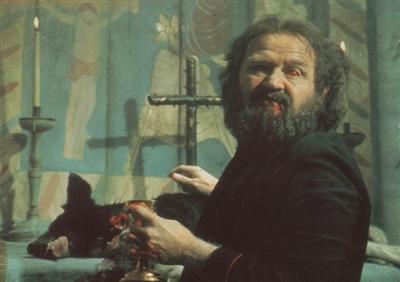
Actor Robert Prosky as Father Mihail Fonescu, refreshing himself with a cup of blood. This scene of father Mihail sacrificing and drinking the blood of his dog on the altar is only briefly shown in the theatrical cut. This was Mihail's attempt to appeal to God to stop the evil emanating from The Keep. Still photos of Prosky show he is wearing red contact lenses.
• Scenes were filmed showing Molasars evil manifesting itself in the German soldiers. In one scene, soldiers refuse orders to go into the celler below the keep and shoot their superior officer.
• There were more scenes between Glaeken and Eva (named Magda in the screenplay) filmed, including one where Glaeken tells her that it has been so long that he cannot remember what he looks like anymore, because he cannot see his own reflection. He tells her about his mission, reveals his and Molasar's names, and sates that he built the keep. He also tells her what is happening to the villagers who are going mad. In one deleted scene that appears in the film trailer Glaeken asks Eva "Did you find what you were looking for?", referring to a scene where Eva snoops through his posessions at the inn when he is away. In another Eva and Glaeken are shown embracing each other as she asks "What's happening to me?" This is a reference to her realizing something is wrong, as Glaeken has hypnotized and seduced her against her will.

Unused dialogue scenes between Glaeken and Eva
• There have been rumors of a missing scene showing the battle between the SS soldiers and Molasar in the keep courtyard. However, nothing was ever filmed showing this, nor was any scene like that ever intended to be filmed. We were only intended to hear this in the distance when Major Kaempffer murders Woermann, then see the aftermath of the battle when Kaempffer enters the courtyard.
• Nazi Zombies! It is not clear if these scenes were filmed, but Molasar reanimates the dead German soldiers from the Wehrmacht unit and the SS guards in the first draft script. In the courtyard scene, littered with the burnt and torn apart German corpeses, Cuza refuses to take the talisman out of the keep. Molasar then returns him to his diseased state with an energy blast. Eva rushes to her father as the dead soldiers begin to rise and approch them. Molaser tells Eva he will let them live if she throws the talisman through the gate of the keep. She refuses and the undead corpses close in on her. As they begin clawing at her and ripping her hair, Glaeken appears. She throws the talisman to him, he attaches it to the shaft, and it blasts a beam of light, as seen in the finished film. In the script he uses that beam to cut down the all the undead soldiers.
The board game describes Molasar using the undead slaves to dig pits in the celler below the keep to find the Talisman that holds him prisoner there. In the released film we only see Cuza doing this for Molasar.
• Many versions of the ending were filmed. Originally Mann had two ideas for the film's climax. One was an epic, effects laden battle between the hero Glaeken and villain Molasar on top of the keep, as in the book, and one continued into the cavernous bowels under the keep.
For the former, Glaeken chases Molasar up a circular staircase to the top of the keep tower. Molaser awaits on the roof of the tower. As Glaeken climbs the last few steps, the ceiling above collapses, taking the staircase with it. Glaeken clings to the interior wall and climbs the blocks to the roof of the tower. He faces Molasar, who's back is to the rising dawn. Glaeken glances down to the ground and sees Eva on the causeway, just as the rising sun crests and temporarily blinds him (this shot is in the trailer). Molasar has the advantage and attacks. Glaeken counters and impales Molasar with his pike weapon. They struggle and both fall into the broken tower floor.
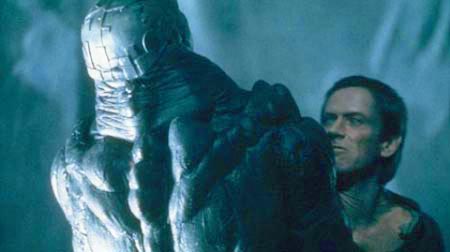
Shots from the unfinished climax filmed for The Keep, in which Glaeken battles Molasar on top of the keep
They fall down through the cylindrical tower to the floor, which explodes and crashes away. They continue to fall through what appears to be an endless pit, then crash through another floor into another stone shaft. They then smash through another floor covered in runes into a stone shaft lined with glowing rings. They pass through some kind of portal, and fall through a cloudy sky towards a desert floor. Before they hit that, they suddenly appear inside a shaft again, as if they are trapped, endlessly falling. The scene cuts to Eva and the villagers helping Cuza on the causeway, and ends with Eva looking back as in the released film.
That battle scene was greatly expanded upon in later drafts. Molasar attacks Glaeken and Glaeken impales him with the staff, as detailed above. Both fall down into the tower and smash through multiple floors, through shafts and open voids, until they pass through a vortex that was to be some type of dimensional doorway into a void. It probably would have had effects akin to the star gate in Kubrick's 2001: A Space Odyssey (a film Veevers also worked on). The two fire energy beams at each other as they tumble through the void, then Glaeken finally blasts and kills Molasar with his energy staff. As Molasar drifts into blackness, a burned and smoking Glaeken continues to fall. Some of this falling footage was shot and made it into the tv version of The Keep with extended ending.
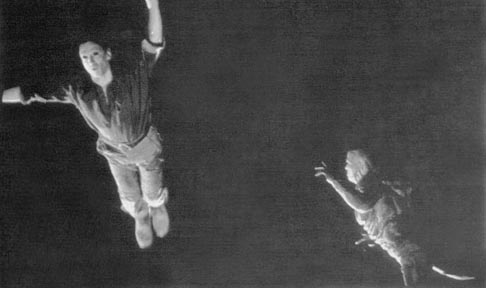
Scenes from the unfinished climax shot for The Keep. Glaeken and Molasar fall into a portal opened in the keep floor and tumble through a void. Some of this footage was used in the original ending of the two hour cut, and appeared in a televised version of the film.
Effects footage was shot for these scenes, including stunt scenes of Glaeken and Molasar falling through smokey blackness. Visual effects supervisor Wally Veevers was the only one who knew how these various effects elements were to be combined and completed. When he unexpectedly died, much of this footage became unusable. The ending had to be re-thought and re filmed later by Mann with a different crew. A massive set of the wall and roof of the keep, backed by the mountain range, was built in stage H at Shepperton studios. Most of the battle between Glaeken and Molasar was filmed but never completed. Reportedly, three major scenes were required to complete the battle, but Mann was already millions of dollars over butdget, and running 22 weeks beyond the original 13 week filming schedule. The producers cut off funding, so these scenes were never completed. Mann cut together a much simplified ending with the footage he had for his two hour final cut of the film, but very little of that remained in the 96 minute released version. The simplified climax had no rooftop battle, and only showed Glaeken and Molasar being sucked into the opened in the keep wall, rather than falling into the tower void.
• One of the final scenes was filmed in the giant set of Molasar's subterranean lair that was built in stage H at Shepperton studios. Eva sees Glaeken and Molasar atop the keep and watches them fall into the shaft. After Cuza is carried away by the villagers, Eva goes back into the keep and travels down into the cavernous subcellar, the same subcellar where Cuza retirved the talisman. How she knows where to go is nt revealed, but presumably she is drawn there. She passes through a vast cavern and down a long stone staircase. At the bottom of this cavern she finds Glaeken's smoking and dead body by a pool of water. He is revived by her touch and comes back to life. Seeing his reflection in the water, he finds he has won the battle and become a mortal man. This dreamlike happy ending was used in some televised broadcasts of the film.
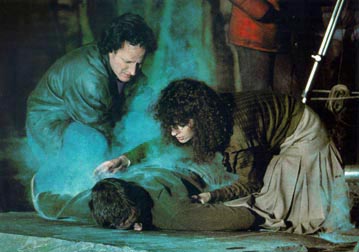
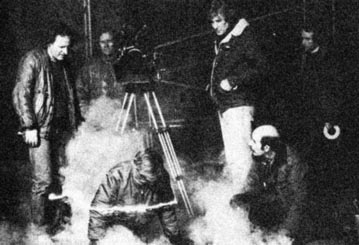
Director Michael Mann (left) on set with the actors shooting the original optimistic ending that took place in the cavern below the keep. This ending was used in some television broadcasts of the film.
• At the very end of principal photography the production moved to Spain and filmed what was to be the very last scene of the movie. This uplifting scene showed Glaeken, Cuza, and Eva all leaving Romania together on a boat.
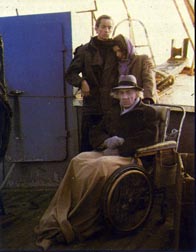
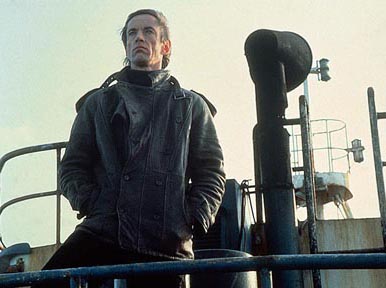
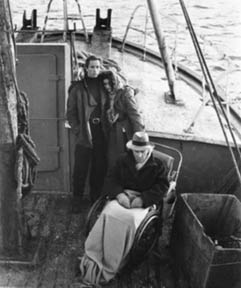
On-set photo of the cut final sequence of The Keep filmed in Spain, featuring Glaeken, Eva, and Cuza on a boat leaving Romania
The Keep film photos by Graham Attwood, copyright Paramount Pictures. Other photos copyright the respective copyright holders.
Website and contents ©2005, ©2007, ©2013, and ©2017 Kit Rae. All rights reserved. Linking to this website is allowed, but copying the text content is strictly prohibited without prior authorization. No part of this work may be reproduced, stored in a retrieval system, or transmitted in any other form, or by any means, electronic, mechanical, photocopying, recording, computer networking, or otherwise without prior permission in writing from the copyright holder(s).
Kit’s Secret Guitar, Gear, and Music Page
Guitar stuff, gear stuff, soundclips, videos, Gilmour/Pink Floyd stuff, photos and other goodies.
Copyright Kit Rae.
VISIT MY SWORDS, KNIVES and FANTASY ART WEBSITE www.kitrae.net
